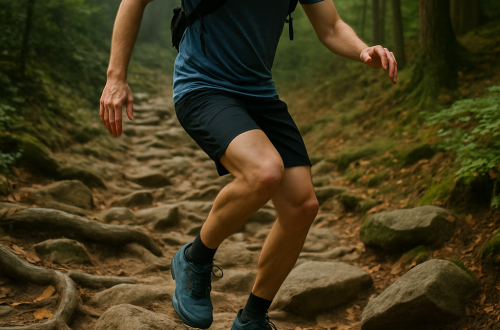
What is power hiking in trail running?
What Exactly is Power Hiking?
Power hiking is a strategic technique used in trail running where the runner switches from running to a fast-paced, deliberate hike—especially on steep or technical terrain. Unlike casual hiking, power hiking is intentional, efficient, and often faster than trying to run up a steep incline. It’s not a sign of weakness—it’s a smart move that helps conserve energy while maintaining forward momentum.
Why Trail Runners Use Power Hiking
Trail running isn’t just about speed—it’s about endurance, terrain management, and smart pacing. Power hiking allows runners to:
- Conserve energy on steep climbs
- Maintain a steady heart rate
- Reduce muscle fatigue
- Navigate technical terrain more safely
- Stay efficient over long distances
Especially in ultra-distance races or mountainous routes, even elite runners use power hiking as a tactical tool.
When Should You Power Hike Instead of Run?
Knowing when to switch from running to power hiking is key. Here are some scenarios where power hiking makes more sense:
- Steep ascents: When the incline becomes too steep to run efficiently.
- Technical terrain: On rocky, root-filled, or loose surfaces where footing is tricky.
- Long climbs: To conserve energy for later sections of the trail.
- High altitude: Where oxygen is limited and running becomes more taxing.
- Fatigue management: During long races or training runs to avoid burnout.
As a rule of thumb, if your running pace becomes slower than your hiking pace, it’s time to power hike.
How to Power Hike Efficiently
Power hiking isn’t just walking uphill—it’s a technique that requires form, rhythm, and purpose. Here’s how to do it right:
- Lean forward slightly: Keep your center of gravity over your feet.
- Use your hands on your thighs: This helps push off and engage your upper body.
- Shorten your stride: Take quick, consistent steps to maintain momentum.
- Engage your core: A strong core supports balance and posture.
- Use trekking poles (optional): They can reduce strain on your legs and improve stability.
Practice makes perfect. Incorporate power hiking into your training to build muscle memory and efficiency.
Power Hiking vs Running: Which is Better on Steep Climbs?
It depends on the terrain and your fitness level. Running uphill may be faster on short, moderate inclines, but power hiking often wins on long, steep climbs. Here’s a quick comparison:
| Aspect | Running Uphill | Power Hiking |
|---|---|---|
| Speed | Faster on gentle slopes | Faster on steep inclines |
| Energy Use | High | Moderate |
| Muscle Fatigue | Higher risk | Lower risk |
| Control | Less on technical terrain | More stable |
In races, many runners alternate between the two depending on the grade and distance.
Training Tips to Improve Your Power Hiking
Want to get better at power hiking? Here are some ways to train:
- Hill repeats: Practice power hiking up steep hills and jogging down.
- Weighted hikes: Carry a light pack to build strength and endurance.
- Stair climbing: Mimics uphill hiking and strengthens glutes and quads.
- Core workouts: A strong core improves posture and efficiency.
- Trail simulations: Include power hiking sections in your long runs.
Consistency is key. The more you practice, the more natural and effective power hiking becomes.
Essential Gear for Power Hiking
While you don’t need special gear to power hike, a few items can make it more effective and comfortable:
- Trekking poles: Help with balance and reduce leg fatigue.
- Trail running shoes: Look for good grip and support for steep terrain.
- Hydration vest: Keeps your hands free and your gear accessible.
- Lightweight clothing: Breathable layers help regulate temperature.
- GPS watch: Track elevation gain and pace to monitor progress.
Choose gear that supports your movement without weighing you down.
Common Mistakes to Avoid When Power Hiking
Even experienced trail runners can fall into bad habits. Watch out for these common mistakes:
- Waiting too long to switch: Don’t push through a steep climb when power hiking would be more efficient.
- Overstriding: Long steps waste energy—keep it short and quick.
- Slouching: Maintain a strong posture to breathe better and move efficiently.
- Neglecting upper body: Use your arms or poles to assist your legs.
- Skipping practice: Power hiking is a skill—train it like any other.
Awareness and small adjustments can make a big difference in your performance.
Final Thoughts: Embracing Power Hiking as a Trail Runner
Power hiking is more than a backup plan—it’s a powerful tool in your trail running toolkit. It helps you tackle steep climbs, conserve energy, and stay strong over long distances. Whether you’re training for your first trail race or pushing your limits in the mountains, learning when and how to power hike can elevate your performance and enjoyment on the trails.
So next time you hit a steep climb, don’t hesitate to hike with purpose. It’s not slowing down—it’s moving smart.
Powered by: aiContent.live



